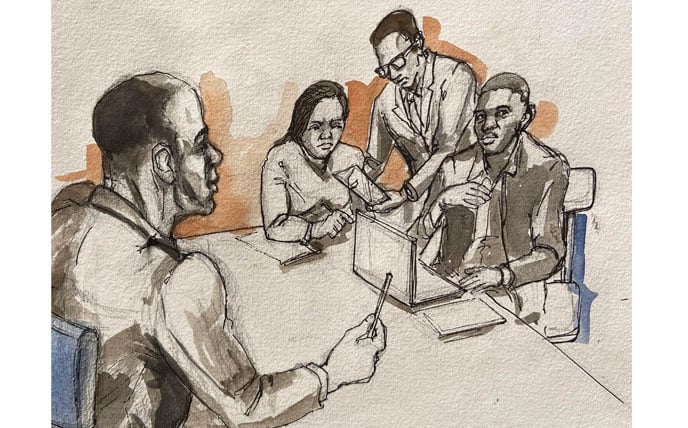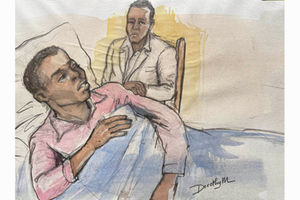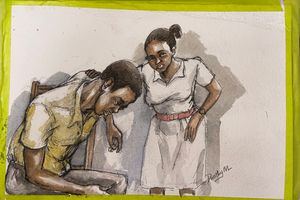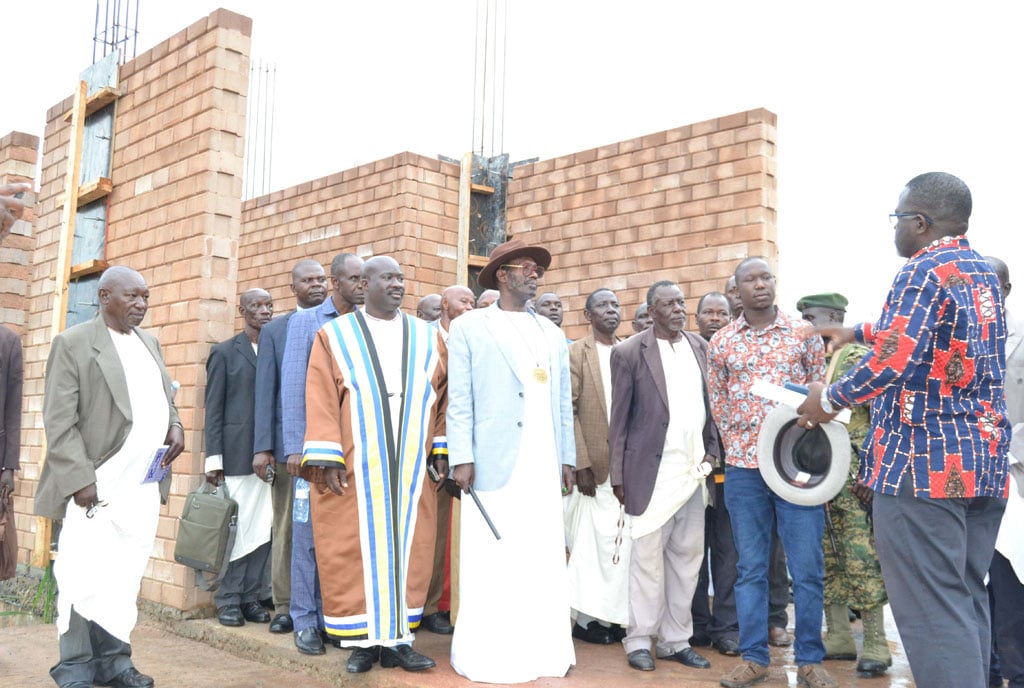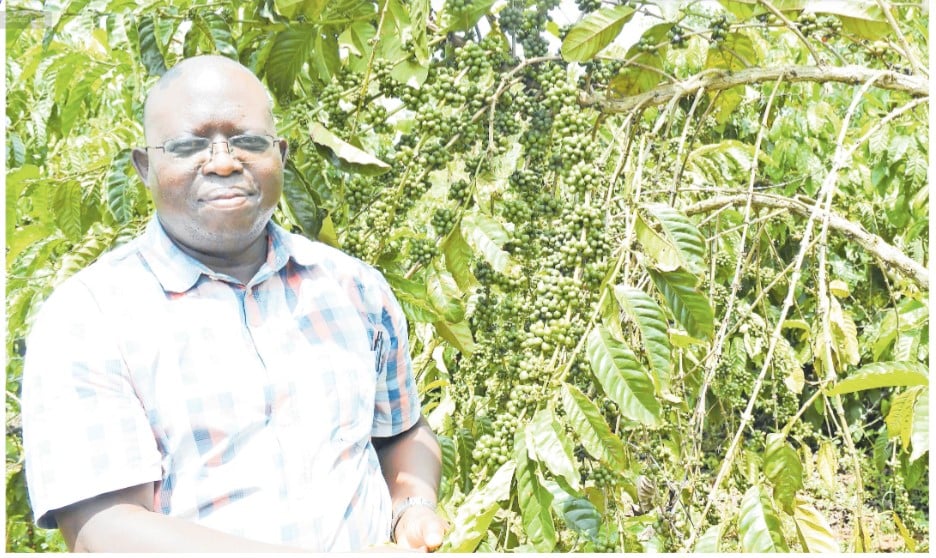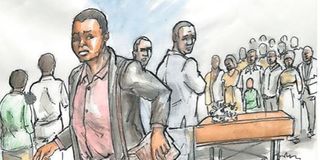
In 2023, a one Richard was charged in the Criminal Division of High of murdering his half-brother, which charge he denied. In his plea, he denied causing the death of his half brother and, specifically, denied giving him poison on March 14, 2021.
His brother, a university student died on May 15, 2021 and court came to the conclusion that his death was as a result of a poison, Carbofuran, which was found in his body. Evidence before court was that this substance is so toxic that it causes death within a short time, something court called acute death.
Richard testified that on March 14, 2021 he met with his father and his step-mother and his half-brother, the deceased, at a spa where they sat until 8pm that evening.
His father and step-mother ordered for beers while he and his half-brother ordered for juice and that the drinks were brought by a waiter.
He acknowledged standing up and then serving everybody else. He, however, contradicted himself during cross-examination when he stated that he walked with his half-brother to the serving area and his half-brother ordered for a cocktail drink that the barmaid made and handed over to his half-brother.
It was also the evidence of the father of the two half brothers that the deceased, while in hospital, told him that his half brother, Richard had “finished him”, implying Richard had killed him. Court considered this a dying declaration and sort to independently corroborate this piece of evidence.
Court found corroboration in the evidence of two other witnesses. A brother of the deceased testified that the deceased kept wailing and told their father that he knew who had done this and yelled further that Richard had killed him.
A girlfriend of the deceased also told court that she was close to the deceased and that the deceased was scared for his life because his father wanted him to be his heir but his half-brother Richard would have none of that and kept threatening him. The witness told court that the deceased was being targeted because of the property of his father.
Another witness also told court that the deceased told her that his heart was heavy and he was weary that he might not live on earth up to 30 years of age on account of the words his half-brother kept sending him. The witness also concluded that the grudge between the half-brothers was because Richard wanted to be heir to his father.
A relative of the two half-brothers testified that during the burial of the deceased, the behavior of the accused changed when it was announced that the deceased had been poisoned.
He is reported to have fled from the burial and then sent a message on social media to their group and the message was the proverb “a forest is shrinking, but the trees keep voting for the axe for the axe was clever and convinced the trees that because his handle was made of wood he was one of them.
The family interpreted this to mean “You cannot know what is finishing you because it is among you”. Another witness testified that the accused sent another message stating “I know there are some dying to slap me, but I am just in your phone; wait, until we meet in person” and then added pictures of smiling emojis.
In a previous case court held that the conduct of the accused person immediately after the death of the deceased of running away from the scene of crime and being in a restless mood in the swamp clearly showed a guilty mind.
The Supreme Court, in another case, held that disappearance of an accused person from the area of a crime soon after the incident may provide corroboration to other evidence that he has committed the offence.
This is because such sudden disappearance from the area is incompatible with the innocence of such a person. To court the conduct of the accused person during the burial and his disappearance after the burial and the insensitive riddle he sent to the family group was incompatible with innocence.
Court considered that evidence of a prior threat or an intention to kill is admissible evidence against a person accused of murder.
Regard must be taken of the manner in which the threat is uttered, whether it is spoken bitterly or impulsively, in sudden anger or jokingly, and the reason for the threat if given.
The length of time between the threat and the killing is also important. This type of evidence may connect the accused person with the offence and may be considered corroborative evidence.
There was some hearsay evidence to the effect that the accused was reported to have said that he wanted his brother, father and step-mother dead. The investigating told court that he investigated a case of threatening violence against the accused due to these allegations.
The motive of murder is not one of the ingredients to be proved in criminal law, but may be persuasive, especially when courts examine the circumstances of a case.
In this particular case of murder, court believed that Richard had grudges against his brother regarding land in their village; that he even encroached on the land of the deceased and he wanted to own all of it. The investigating officer claimed that Richard had build two concrete pillars on land belonging to his brother.
The law governing inconsistencies or a discrepancy is that grave inconsistencies, if not satisfactorily explained, will usually result in the evidence of the witness being rejected. A grave inconsistency or contradiction is one that goes to the root of the matter.
Court noted that in respect to the evidence of Richard regarding what happened on March 14, 2021,he stated that when they made orders for drinks, the person who served them put the drinks aside and he, Richard, then picked them and then gave each person his or her drink. He contradicted himself when he said he did not serve his brother.
According to court, Richard gravely contradicted himself on who served the deceased the cocktail drink.
He at one point stated that he, Richard served his brother last after he everyone had been served and at another point he said that he and his half brother walked to the counter.
Court considered the range and character of the contradictions and inconsistencies in the evidence of the accused.
Court found them to be so grave in so far as they related to matters that were central to issues in the case; they did relate to matters which were central to the decision in this case.
The evidence, therefore, suggested that the contradictions were the result of deliberate untruthfulness on part of the accused to whom they were attributed to.
To be concluded...

